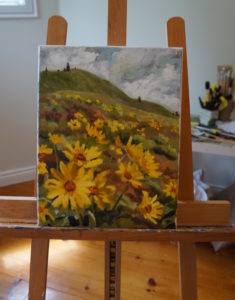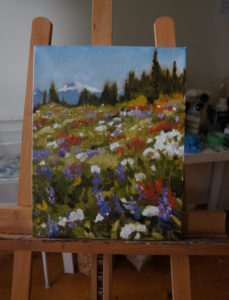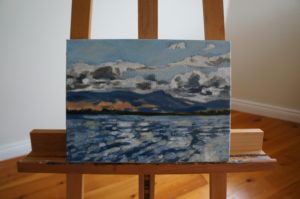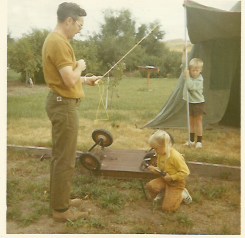“It doesn’t make sense to some of us, you can clarify it.”
“You need to write about this stuff”.
Questions have been popping up in my inbox and in conversations surrounding the art industry. Topics range from galleries, sponsorships, art fairs, shipping, industry standards, and how artists make money. (see how my work is priced, click here)
 New “Wild Sunflowers” 11×14 oil
New “Wild Sunflowers” 11×14 oil
Because it’s the most frequent question, let’s start with the money talk.
Artists are paid solely from the sale of their work.
Most galleries and artists offer free consulting, unlike other design firms who charge an hourly consulting wage.
There isn’t a benefit plan or painters union, (that I know of) thou I believe one exists for actors.
Sponsorships:
Museums may have corporate sponsorships to assist with the cost of hosting exhibits, this money goes directly to the museum.
It’s very rare for artists to acquire corporate backing for expeditions or hosting exhibits.
Unlike athletes who may receive free gear from sponsors, artists don’t receive materials for free, thou some art suppliers offer bulk discounts. (How many consumers view you-tube to see an athlete win a race, vs. to see an artist paint?)
Art Fairs:
Fairs are popular events to attend in the balmy days of summer, or near the holiday season. A few examples of booth fees to exhibit are:
One of a Kind Exhibit (Toronto)- 10×20 booth- 7,113.00
One of a Kind Exhibit (Chicago) 10×10 booth- 2,550.00
Make it Vancouver- 15×10 booth- 1,350.00
Artist Project (Toronto) 10×20 booth- 5,590.00
Art in the Park (Windsor) 675.00
Note: most fees are for booth space only. Lighting, props, etc, are extra. Many artists travel to these exhibits, add the cost of shipping work & booth materials, hotels, meals, etc and these events may cost a small fortune. Ironically, some patrons ask artists for a ‘show special/ discount’. Why it’s the norm to offer one doesn’t make sense. (or cents, for that matter).
 New “Mountain Meadow” 11×14 oil
New “Mountain Meadow” 11×14 oil
Galleries:
In many countries galleries collect a minimum 50% commission. (IE: an artist will collect 500$ on a painting sold for 1000$) Taxes are charged directly to the client as is framing cost.
Few galleries pay their artists immediately upon the sale. Most wait 30 days to make certain the payment clears. One of my representing galleries had a minimum 60 day wait period.
Shipping to galleries is paid by the artist. Shipping unsold work back to the artist is paid by the gallery. Clients are charged directly for shipping from galleries.
With high commission rates and risk of my work getting lost among large collections, clients ask ”Why the need to have art represented in galleries at all?”
It’s a relevant question, because thanks to the worldwide web artists have access to a global audience at their fingertips.
To be clear, I only seek representation with galleries of high ethics & reputation, selling quality work. (how I choose a gallery, click here).
Why:
- To give you access to the work with options to view & purchase. Some clients aren’t comfortable visiting an art studio, or purchasing online.
- Many corporations won’t purchase art from an artist directly, due to their regulations, or invoicing governance.
I once called nearly every company in Canada with corporate art collections (& many that don’t) I received this answer over and over again.
Impressed by Bruce Steinhoff’s massive list of corporate collectors I complimented his resourcefulness. He remarked “all credit goes to the gallery”. Click here to see the list & his work.
- Street Creds. It’s still of recognizable status to have gallery representation. Clients feel assured the work has value when also sold with a reputable gallery.
- The gallery’s reputation, contacts and history of selling. The gallery will expose the work to established collectors. Many top end collectors will only deal with a gallery.
- The gallery will advertise and display the art on their websites & social networks. If they sell famous work, collectors googling famed pieces will often peruse the galleries full collection.
- The secondary market. It isn’t against the law for an artist to submit their own work to auction/ secondary market, but it is certainly frowned upon. The galleries have the ability to give longevity to the work by introducing it/ circulating it on the secondary market once the artist is well established.
Note: a great gallery will work with the artist and act as an incredible support system. To read about this click here.
It’s also important to note, when a gallery is selling the work well, and handling much of the business end, it can relieve alot of stress for artists and free us up to do what we are best at, and that’s paint.
NEWS: Happily, my gallery representation is expanding. I have recently acquired a US art dealer who will sell the work in two galleries/ states & ship across the US. Americans who write hoping for a venue in your country, that day is arriving soon!
It’s still a thrill to meet with clients directly and sell thru my home studio, while offering the work at amazing venues like the Hambleton Gallery in Kelowna, where these three new paintings will be available for purchase. I couldn’t ask for more professional wonderful people like the folk at Hambleton. Thanks Stew, Tracy, Kenna, Jessica & Joshua!
~
Happy Father’s Day weekend to all the great Dad’s.
I celebrate my amazing father, a conservation officer, passionate musician, humanitarian, champion of the people, wildlife & wilderness, who is steadfast, gentle, sparkling with humour. Referred to as “One tough Norwegian” by a Doctor.
In the last decade he has voluntarily performed over 1000 shows in nursing homes & hospitals and at 83, continues to play 100 performances a year. He represents so much that is good in life, and continues to be an incredible role model. Love him so very much.






